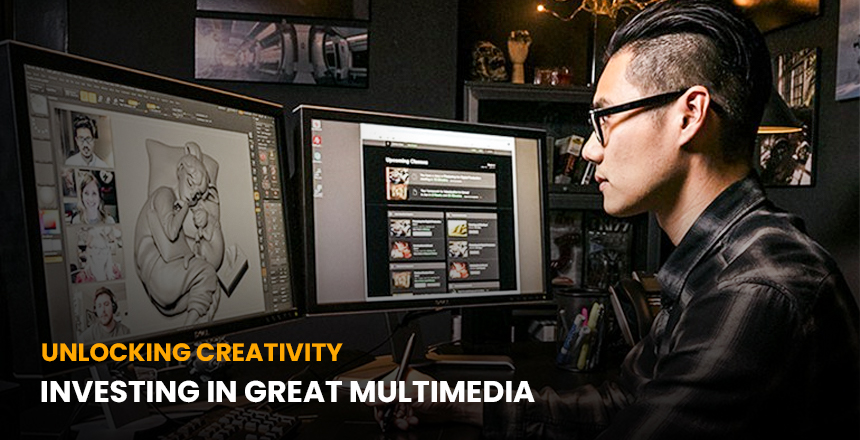People are very short of time, and there is a tremendous amount of multimedia content fighting
for people’s attention,’ he said, which makes it difficult nowadays to create something that will
make your target audience sit up and take notice. However, with a little planning and ingenuity,
you can open up your mind to create interesting and consistent content for every one of these
media types. In this blog post, we’ll outline specific strategies related to creating complete media
that is in the form of videos, infographics, animations, or other combinations of text, image, and
sound.
Understand the Features of Your Message and Your Target Audience
Before you can break the chains of your creativity, it is pertinent to understand the purpose of
the whole presentation—the message that you are conveying and the people who you are
telling it to. Assume that you will have your brand idea, message, and call to action outlined at
the beginning to ensure everything you do is linked towards the objectives. Engage in time
understanding your audience—what they like, what matters to them, what they prefer in terms of
content, let alone their favorite forms of recreation. These will be helpful in establishing ideas to
grab their attention, as conveyed below. What multimedia content types can you think of that are
able to significantly convey your messages and build emotional and intellectual connections with
the viewers?
Brainstorm Broadly
Considering your message and the audience you are going to target, try to come up with as
many ideas as possible at this stage, being free to generate any ideas without evaluating them.
Indicate what is intuitively obvious; spontaneous sketches; write down any material that can be
cross-referenced for free association. Refer to material of art, music, poetry, or anything one
sees or hears in day-to-day life. Bring the picture, analogy, witty saying that might grab viewers’
interest, stimuli, and documentary evidence for arguments. Don’t discard your goofball ideas;
some of the best ideas have unorthodox origins and can be great for future projects. Make sure
to jot down any idea and make sure to also contribute off of other people’s ideas too.
Map Ideas and Find Gaps
Secondly, bring your batch of ideas and club-associated ideas together. It cannot be a list of
stand-alone information bits and pieces; instead, try to find the connections between the various
concepts. If you see areas where there seems to be somewhat of a gap for which you need to
create more of a bridge in your mind between one concept and another, those are areas that
require creativity. If you are unable to work it out, then don’t hesitate to seek assistance fromother people. Best to keep the mind receptive rather than try too hard too much when generating ideas. Never stop ideating from a problem spot until one gets that great idea.
Explain the Multimedia Framework
Now turning to your key ideas and your proposed sequence, sketch out how a plan can be used
to convey it via multimedia. Each message should be evaluated and determined, which format
is better to explain this idea—photo, charts, or video. How much more attention would a key
statistic draw if presented as blue big bold text or voiced over bright pictures of orange bars? As
his father, would a shared personal story engage listeners as spoken words or as poetic? Find
out which grouping of formats is most effective in presenting information that is engaging and
easy to understand.
Craft Captivating Content
Now it is time to come through with every element of your multimedia strategically. Think of
vibrant, energetic, and relevant images, the most successful color scheme, and graphic design
able to prompt a reaction from the target audience. Choose or capture or take pictures and
moving images that not only report facts but also meaning as well as feeling. To use textual
data, make plain and boring lists of facts exciting, dramatic descriptions, explaining stories, and
witticisms. Capture voice-over data not as formal dry oral presentations but as enforced
narrative. Integrate all these creatives into a theme and sub-theme that is well thought out and
fits in a storyline that would hold the attention of the audience in a holistic sequence, all of which
would be in sync with your message.
Refine Through Feedback
When the first multipart, multimedia draft comes together, look for reviewers who bring no
preconceived notions to the content. Ask your friendly critics, preferably the ones that always
have your target audience in mind, to tell you which sections of your content were intriguing and
which did not make any sense, which got their attention or lost it. This is important; reject
criticism; do not attempt to justify your creative decisions yet. Discussed note patterns where
visuals, audio, or text pieces interfered with the message or its sequence. Gradually, just refine
those weak points according to the feedback received for them. As such, you might need to
reconstruct how material is developed, how a spiral is accomplished, even times eliminating
what they write when it’s not effective and redoing it with something different. Perform this
iterate-and-refine cycle of steps until your audiences understand your work adequately and
remain attentive to it.
Wrap Up
Creativity is not easy; it requires imaginations, trials, and errors, a lot of patience, but in our
multimedia, it is so rewarding to have those that capture hearts and minds. When knowing
down to the last detail what it is you want to communicate and to whom, then casting a wide net, categorizing carefully, and revising rigorously, you can create content for various media that
educates, entertains, and inspires your audience. Let’s look at what ideas you will liberate today
for your next enthralling masterpiece. Get ready for some creative brainstorming.








